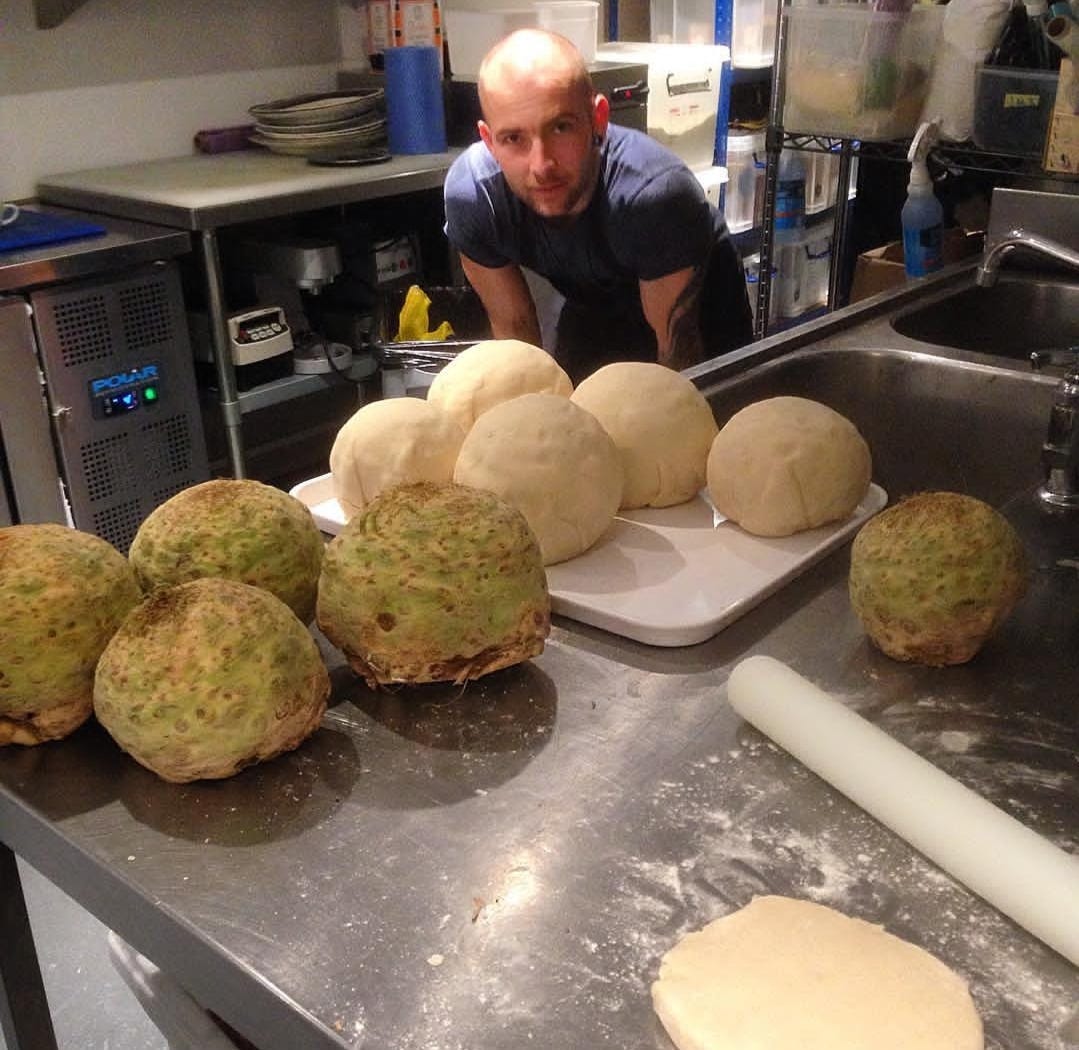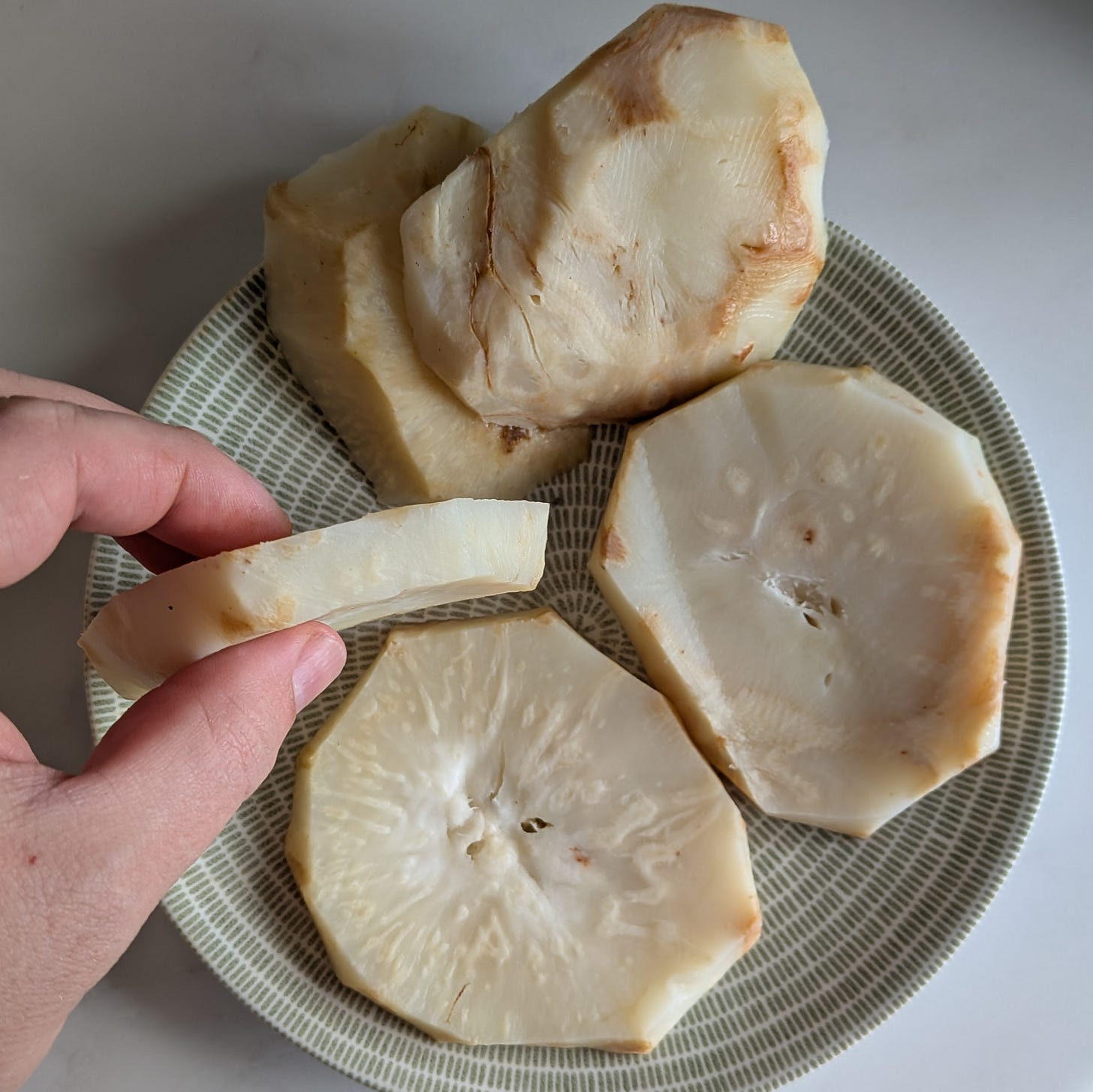Things To Do With Vegetables When You're...
... in need of simple comforts in autumn.
Many thanks to those who read and sent lovely messages about my essay last week.
For those who didn’t catch it, I wrote about my recent trip back to Stockholm and my first visit since I left to my old workplace; a restaurant called Oaxen.
This month’s edition of Things To Do With Vegetables When You’re… is very much a tribute to the thoughtful, veg-forward food we often cooked at Oaxen.
Plus, I’m sharing tips on salt crust dough baking and a way to use dried mushrooms to make a very special panko breadcrumb coating.
I hope you like it,
Wil
An(other) ode to husmanskost
When it comes to satisfying and comforting food that could keep you going in a field for hours, herregud do the Swedes know what they’re doing. And they even have a word for it: husmanskost.
Husman refers to a “house owner”, and kost means something like “fare”. Husmanskost refers to simple, hearty food, full of energy, that makes use of local ingredients such as root crops and pork.
Meatballs and mash, for example, is definitely husmanskost.
Back in 2023 I shared my first ode to such dishes. But the very husmanskost-y dish I’m sharing today is not only totally vegetarian (and easy to make vegan) but it’s also a personal favourite from one of the last menus I ever cooked at Oaxen.
It makes use of beautifully autumnal celeriac, dried wild mushrooms to deeply season the breadcrumb coating, and humble frozen peas to add a little summery lightness to rich potatoes.
Crispy celeriac with pea puree potatoes and mustard-tarragon mayo
Like all the best simple food, this dish takes a little bit of work. So bear with me as there are some really useful tips here for you to take away.
First, the celeriac… and a brief diatribe about my cooking priorities.
For me, two things matter most in great cooking: salt and water. Understand how they shape food, and you’ll quickly become a better cook.
Which leads to the two basic ways of cooking: boiling and roasting.
Cook a vegetable in salted water and it comes out seasoned in a way sprinkling the salt on top never achieves.
But boiling achieves none of the dehydrating concentration of flavour that roasting offers.
This is where cooking vegetables in a salt dough crust comes in.

This technique permeates your vegetable with salt, while drawing out that little bit of moisture that helps to concentrate flavour as well.
And, as the picture above attests, there is no vegetable better to use for this than the humble celeriac and it’s the first step in making our crispy celeriac.
Salt-baked celeriac
200g fine salt
300g flour (not your finest organic, please)
150ml water
Celeriacs (this dough quantity is enough to wrap several of them)
Mix all ingredients together and knead until you have a cohesive dough. Roll out the dough until it’s about a half a centimetre thick (but this is no precise rule). Cut the bottom muddy roots off your celeriac (but no more, you want to keep the rest of the skin on) and wrap the celeriac in the dough. Be sure not to let the wrapped celeriac sit for long. The salt will soon draw out moisture from the veg and the dough will start to disintegrate.
(Yes I learned this the hard way as a trainee cook when, after an hour wrapping celeriacs, I went to the toilet for just a bit too long and returned to find the dough all melted off them.)
Roast at 160°C until it’s tender throughout. That will take about 1.5-2 hours for a medium celeriac the size of two fists put together. Check with a sharp knife pierced through the bottom of the celeriac to be sure.
The next step is crack away the crust and remove the skin of the celeriac so only the beautiful creamy white vegetable remains (the skin will be very salty for obvious reasons so cut a good few millimetres deep of it away). At this stage your celeriac will be delicious served as is sliced or cut into chunks, maybe dressed in some herbs, vinegar, and oil.
For our purposes, we want to let the skinned celeriac cool completely (I leave my whole cooked celeriac in the fridge overnight). This firms the flesh a bit and makes slicing it much easier.
Once it’s cold, slice your celeriac into something like half inch/1.5cm slices.
A small to medium size celeriac (which I prefer because they’re less likely to have big holes in the middle) should yield about 3 single-portion slices, with a fourth portion made from the two smaller end slices.



